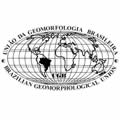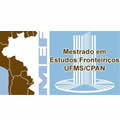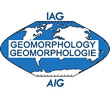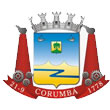Autores
- HUDSON MACEDOUFMS/CPANEmail: hudson.macedo@ufms.br
- JOSÉ STEVAUXUFMS/CPTLEmail: josecstevaux@gmail.com
- AGUINALDO SILVAUFMS/CPANEmail: aguinaldo.silva@ufms.br
Resumo
The Upper Paraguay River Basin comprises areas with distinctive biological and physical characteristics, with the
Pantanal being the most complex. The fluvial plains of the Paraguay River within the Pantanal have peculiar
hydrosedimentary dynamics and are of great importance because they are the main collectors of this huge depositional
tract. This study investigated the Quaternary evolution in the Paraguay-Corumbá Fluvial Plain, using remote sensing,
sedimentary, and geochronological analysis. Three geomorphological compartments were identified: 1) the floodbasin of
the Paraguay River presents drainage formed by suspended-channels. In the southern portion of the floodbasin, these
channels converge into meandering channels with scroll bars, similar to those present in the southern Pantanal region;
2) depositional fluvial landforms are composed of an abandoned meander belt on the floodbasin; and 3) the active meander
belt of the Paraguay River. The origin and evolution of the floodbasin were influenced by both climatic factors (drier
climate) and the localization of the area in relation to the watershed. The paleomeander belt shows depositional
landforms indicating different hydro-sedimentological conditions, but with similar water discharge to the nowadays. An
evolutionary sequence of the geomorphology of the area was proposed: 1) formation of suspended-channels in the Paraguay
River floodbasin during the 50–20 ka BP; 2) formation of the former meandering belt of the Paraguay River, at the end of
the Pleistocene and early Holocene, truncating the suspended-channel forms in the floodbasin; and 3) with progressive
climatic changes and increasing river discharge in the upper Holocene, an avulsion occurred in the Paraguay River near
Castelo Bay and built the current single-channel meander belt. The identified and mapped landforms, which produced
overlapping fluvial styles, have recorded paleoenvironmental and paleohydrological changes since the Late Pleistocene.
Palavras chaves
Fluvial geomorphology; Hydro-sedimentology; Paleoenvironmental change




















